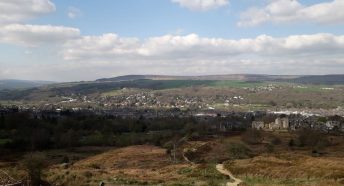CPRE, the countryside charity structure review
David Cove, CPRE West Yorkshire Chair explains some recent changes to the CPRE network.
National CPRE has recently been reviewing whether it can improve the way it proceeds in the future. CPRE’s structure, while not unique, is certainly unusual.
As well as the national charity, each local group is an independent charity. This structure has advantages and disadvantages, but the local groups are keen to retain their independence. Subscriptions are paid to the national charity and a proportion of each subscription is then given to the local branch charity in which the subscriber lives. Local groups may also receive legacies.
The result of this structure is that some local groups are much better funded than others. West Yorkshire is not well off, principally because there are not as many West Yorkshire-based members as we might hope. This in turn, means that we have fewer active members than we really need, so we are not achieving as much as we wish.
We have started to organise a number of small meetings aimed at potential members explaining what the charity does and what we would like to do. If you would be able to hold such a meeting, please let me know.
One issue that has arisen due to this structure was the challenge of competing priorities of the national and local bodies. To resolve these challenges national CPRE employed consultants who recommended the creation of a new body now called the Assembly.
The Assembly includes a representative from each local group and some national charity representatives. The Assembly’s establishment was agreed upon at this year’s national AGM, and the Assembly has now held its first two meetings.
As the Chair of CPRE West Yorkshire, I have attended both of these meetings, the first physically for the first time in ages, the second by Zoom.
The first meeting was lively and we identified four areas that we would like to see developed:
- Water (including rivers, coastal, pollution, sewage, impact of climate change and anaerobic digestors)
- Transport (including distribution centres, road classification, housing development)
- Land Classification (including land use grading)
- Community Rights (including authorities marking their own homework, bias in reviews and decisions, and failures to meet commitments)
Each area is worth further discussion, but I am particularly interested in water-related topics, so I have joined the small group discussing this topic.
The major rivers in West Yorkshire, the Aire, the Calder and the Wharfe are all important green lungs. As well as being important for wildlife, they provide essential recreation opportunities.
The West Yorkshire branch has already carried out a feasibility study, based on two stretches of the Calder and the Aire, to examine the opportunities for improvement of access and use and identify threats from potential future development.
Canal towpaths provide excellent cycle and walking routes, but access to towpaths is only sometimes possible, particularly in the heart of a city.
Of equal concern is identifying and combatting pollution.
These are early days yet for the Water group. Our first meeting concentrated on pollution, a particular problem for some southern rivers.
Still, the pollution of our Yorkshire rivers also needs more monitoring, and we may be calling for volunteers to monitor “their” stretch of a river so that we can assess how much of a problem pollution is to our rivers.
Further sessions will start to deal with development and access.
I will inform members of progress through our newsletters and website – David Cove, Chair, CPRE West Yorkshire. Yorkshire





